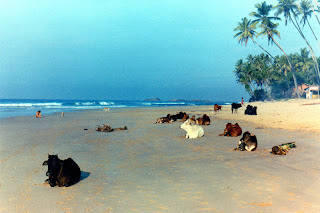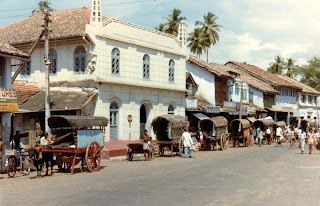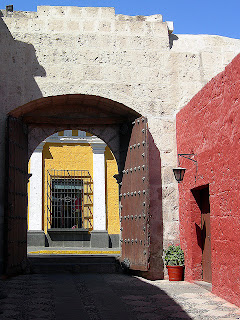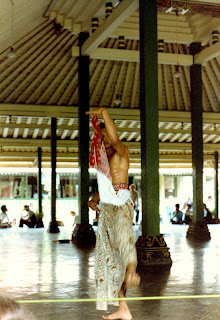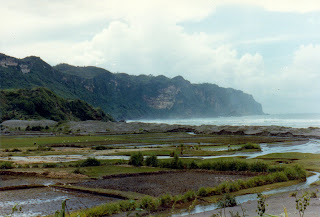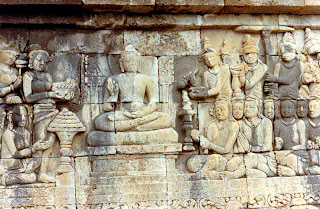On December 19th 1980 I was in Wulu in Southern Sudan on the last leg of my Christmas holiday journey.
I had found a truck in Mundri to take me close to Rumbek. Unfortunately the truck was bound for Wau and was taking the direct track to Tonj and not passing through Rumbek. We stopped for the night in Wulu, twenty miles or so south of Rumbek, and I spent the night soundly asleep on the veranda of the police-station.
The truck had been almost empty and I had tried to sit up on top of the cab for a seat and the best view, but the driver was hell-bent on getting to Wau in record time and eventually I took my bruises back to my usual spot over the wheel-arches. We passed through thin forest with antelope and baboons and little population. The country around Yeri was more populated, the people I think Moro. After Mvolo it was dark, and the forest became much thicker, the road much rougher. The passengers looked out, calling out in various languages the names of any animals, such as cats and jackals, a hyena and honey badgers, and the tribal affiliation of any people we saw, mainly Jur-Bel and some Dinka. We took on a Jur-Bel hunting party who were going to Wulu, where we arrived exhausted about 8.30.
Wulu was scarcely a town, just a few single story buildings set a round a wide open space. I woke about 5am when the truck left and I wondered what to do: I'd bought a load of fresh fruit, a precious commodity and I was reluctant to lose it. I went to pay a courtesy call on the Dutch nurses who had their base in Wulu. Elie was inspiring to talk to, homely and business-like at the same time, treating a large number of Dinka, who always preferred the nurses' clinics to the hospital in Rumbek. She offered to drop some of my stuff at my house when she next passed so that I could walk to Rumbek, and I quickly decided to take her up on this. I wrote this description of the walk when I got back to my house.
The walk was fine. I stopped for tea in Lol Cuk, a Dinka village about an hour's walk on. I was always trying to push ahead which I expect was right. There was a long forest area near the road junction where I saw an augur buzzard and a couple of Jur with bows and metal-tipped arrows. I stopped for welcome lunch amidst flies and silence. I was constantly afraid I was making too little progress. The next settlement under some mango-trees seemed like a Jur prison camp, the people were hostile and jeering and I felt discouraged. But I sat down for an orange after a toich section and felt better when I started again. I was singing out loud. When I got to Maloe there was an army truck. 13 miles in less than 4 hours.
After Yambio I had taken a crowded but entertaining truck to Maridi. There was a travelling Nigerian magician on board, with snakes and drums and other effects including a heavy act he turned on late in the day to frighten the other passengers; his travelling companion just shrugged her shoulders under the black shawl she wore - she had a particularly striking face with dark deep cheek scars. In Maridi I again had to spend two nights before I got out, but here there was the side attraction of a ridge of low hills which meant I was able to get out to a little solitude and altitude. I wrote this in my notebook.
 |
| Village near Maridi: My Picture |
How wonderful to have discovered an accessible hill. I saw the ridge last night in the dying sunlight and this morning's plan was immediately formed in my head. It worked OK although I had occasional misgivings as I couldn't believe any trail in Africa would lead where I wanted to go. The ridge remained before me as a goal and I managed to find a route through lovely huts with red-earth beaten compounds hidden amongst banana patches. Then I was on a jeep trail around the teak forest and suddenly a gap, the words "open country" sprang into my mind, so that I had to cry them out loud.
 |
| Mist in the Valley at Maridi: My picture |
Up here it's like a chain of dome-shaped tors, four or five I think, hard rock patches and loose stones, little clumps of tufty moss like grass are the main vegetation, plus some short grass and occasional small trees. The birds are larks, wheatears and kites. Mostly around I can see planted teak forest but straight ahead from where I sit now is an open patch of farmland, durra and bananas and mango trees, cassava I'm sure, cocks still crowing and odd voices and bangings and clappings. The birds below fly in winter flocks. A kite flies around and over me as if to attack. Beyond is rolling country with just a couple of hills, still some mist in the low valleys, but it's mostly giving way to haze. The countryside looks more like wooded savannah than the equatorial forest of Zandeland, even if the equatorial forest there has been slashed and burnt. But it's much bushier and thicker than Rumbek which was looking very brown and dusty when I left two weeks ago.
I continued a bit further along.
 |
| On The Ridge at Maridi: My picture |
I am now on the last hill of the main chain, there's a metal/stone pillar to mark that peak, maybe the highest of the chain. I know it's not much in the way of hills but I haven't been able to look down on things much recently. A good wind is blowing from the north, giving nice air for kites and hobbies and other birds of prey. To the south is Maridi, stretched out, so many different complexes and I can't make out the souk or the hill I was on last night, not for sure anyway. But I can see the trail I'll take back to town. I'm on rocks at the end which are almost steep, and short trees which have shed their leaves and contain one or two beehives, long thin ones wrapped in straw. Voices of children come up from the durra and papaya trees. It's very peaceful up here.
From Maridi to Mundri I took a bus from the Karim Bus Company, which travelled fast and furiously along the gravel road. A bus was completely unexpected and I spoke with one of the family of the owners. They were Ugandan Asians from Arua and refugees to Kenya from Idi Amin. They ran buses from Nairobi to Western Province and had brought four vehicles to Juba, running three routes to Torit, Yei and Maridi. The Maridi route had only been running for a month and was doing so at a loss because local people thought it too expensive and not for them. I did not see further evidence of these buses in Juba when I went there later.
 |
| Maridi: My picture |
